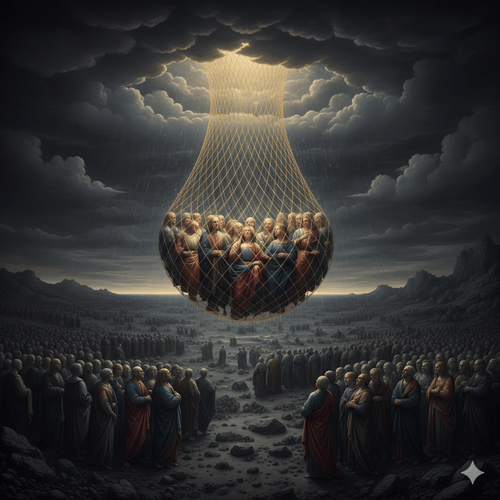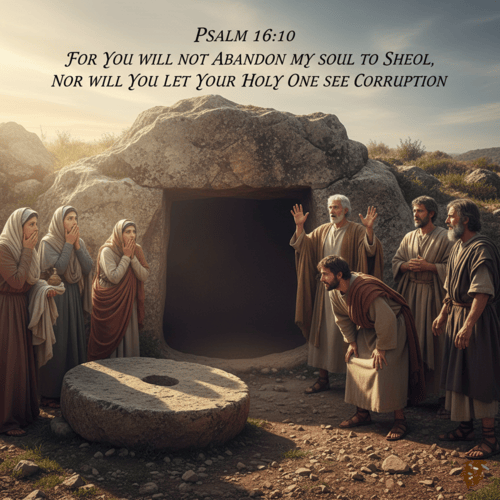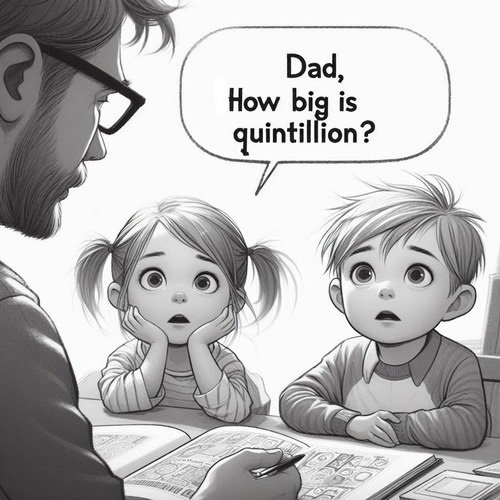Old Covenant Vs New: The Shadow Becomes Substance, and How!
Picture a child looking at a shadow on a wall. And then it dawns on her: the shadow is that of her dad standing at the door.
Shadows do tell a story, but they’re not the real thing—they point to something greater. This is exactly how Scripture describes the relationship between the Old and New Covenants. The Old Covenant wasn’t a failed experiment that God scrapped; it was a divinely designed shadow that perfectly prepared us for the substance: Jesus Christ.
Understanding this relationship isn’t just theological trivia—it shapes how we read our Bibles, understand salvation, and live as Christians. Let’s explore how the shadow becomes substance through five crucial transformations.
1. FROM PROMISE TO FULFILLMENT
The Old Covenant was never meant to be the final word. Hebrews 10:1 tells us plainly: “The law is only a shadow of the good things that are coming—not the realities themselves.” Every sacrifice, every ceremony, every priestly ritual was a signpost pointing forward to Christ.
Consider the Passover lamb. For centuries, Jewish families slaughtered unblemished lambs and painted blood on their doorposts, trusting God’s promise of protection. But this was always pointing ahead to “the Lamb of God, who takes away the sin of the world” (John 1:29). The shadow served its purpose perfectly—it taught Israel about substitutionary sacrifice and prepared them to recognise their Messiah.
The New Covenant doesn’t destroy these Old Testament pictures; it reveals what they were always about. As Hebrews 8:6 declares, Christ is “the mediator of a better covenant enacted on better promises.” The substance has arrived, and it’s more glorious than the shadow ever hinted.
2. FROM EXTERNAL RULES TO INTERNAL TRANSFORMATION
Perhaps the most striking difference lies in where God’s law resides. The Old Covenant was literally carved in stone—external commandments that showed people God’s standard but couldn’t give them the power to meet it. The result? A constant reminder of human failure and the need for something more.
But God promised through Jeremiah a day was coming when things would be radically different: “I will put my law within them, and I will write it on their hearts” (Jeremiah 31:33). This isn’t about lowering the standard or making obedience optional. Instead, God promises to transform us from the inside out.
Ezekiel captures this beautifully: “I will give you a new heart and put a new spirit within you; I will take the heart of stone out of your flesh and give you a heart of flesh” (36:26). The New Covenant doesn’t just tell us what to do—it changes who we are. Through the Holy Spirit, God’s people now have both the desire and power to obey from the heart.
This is why Paul can speak of believers as “circumcised with a circumcision made without hands” (Colossians 2:11). The external sign pointed to an internal reality that only Christ could accomplish.
3. FROM TEMPORARY PRIESTS TO THE ETERNAL HIGH PRIEST
The Old Covenant required a complex system of human mediators. Priests offered sacrifices, interceded for the people, and maintained the elaborate worship system. But these priests had a fundamental limitation—they died. Hebrews 7:23 notes there were “many priests because death prevented them from continuing in office.”
Moreover, these priests needed to offer sacrifices for their own sins before they could minister for others (Hebrews 5:3). They were part of the problem they were trying to solve.
Enter Jesus Christ, our eternal High Priest. Hebrews 7:24-25 declares “because Jesus lives forever, he has a permanent priesthood. Therefore he is able to save completely those who come to God through him, because he always lives to intercede for them.” Christ needs no successor because death cannot touch Him. He offers no sacrifice for personal sin because He has none.
Paul summarises it well: “There is one God and one mediator between God and mankind, the man Christ Jesus” (1 Timothy 2:5). The shadow of multiple, temporary priests has given way to the substance of one perfect, eternal mediator.
4. FROM REPEATED SACRIFICES TO THE ONCE-FOR-ALL SACRIFICE
Every morning and evening, Old Testament priests approached the altar with fresh sacrifices. Every year on the Day of Atonement, the high priest entered the Holy of Holies with blood that would need to be offered again 12 months later. Why? Because “it is impossible for the blood of bulls and goats to take away sins” (Hebrews 10:4).
These repeated sacrifices served as an annual reminder of the sin problem that remained unsolved. They were promissory notes, not final payment.
But when Christ appeared, everything changed. Hebrews 10:10 proclaims, “We have been made holy through the sacrifice of the body of Jesus Christ once for all.” Not annually, not daily, but once for all time. Christ “entered the Most Holy Place once for all by his own blood, thus obtaining eternal redemption” (Hebrews 9:12).
The shadow of endless repetition has become the substance of perfect completion. When Jesus cried “It is finished” from the cross, He wasn’t just ending his earthly life—He was declaring the work of atonement was complete forever.
5. FROM CONDITIONAL BLESSINGS TO UNCONDITIONAL SECURITY
The Old Covenant’s structure was fundamentally conditional. Deuteronomy 28 laid out the terms clearly: obey and be blessed, disobey and face consequences. “If you fully obey the Lord your God and carefully follow all his commands… all these blessings will come on you” (28:1-2). This wasn’t wrong—it revealed the righteous character of God and the serious consequences of sin.
But human nature made the outcome predictable. Despite miraculous deliverances and clear commands, Israel repeatedly broke the covenant. Jeremiah 31:32 records God’s assessment: “They broke my covenant, though I was a husband to them.”
The New Covenant operates on entirely different principles. It’s grounded not in human faithfulness but in God’s unchanging character. The same passage in Jeremiah that diagnoses the problem also announces the solution: “I will forgive their wickedness and will remember their sins no more” (31:34).
This doesn’t mean the New Covenant lacks moral demands. Rather, it means our standing before God depends on Christ’s perfect obedience, not our imperfect efforts. As Paul triumphantly declares, nothing “will be able to separate us from the love of God that is in Christ Jesus our Lord” (Romans 8:39).
UNITY IN DIVERSITY: THE REFORMED UNDERSTANDING
Here’s where Reformed theology offers crucial insight: these aren’t two completely different religions but one covenant of grace administered in two ways. The Westminster Confession puts it beautifully: “There are not therefore two covenants of grace, differing in substance, but one and the same, under various dispensations.”
The substance has always been the same—salvation by grace through faith in Christ. Abraham was justified by faith (Romans 4:16), David knew the blessedness of forgiveness (Romans 4:6-8), and Old Testament believers looked forward to the same Messiah we look back to.
What changed was the clarity and fullness of revelation. The shadow has given way to substance, but it was always pointing to the same glorious reality.
LIVING IN LIGHT OF THE SUBSTANCE
Understanding this transformation changes everything. We read the Old Testament not as outdated rules but as Christ-centred revelation. We approach God not through human mediators but through our eternal High Priest. We rest not in our performance but in Christ’s finished work.
The shadow has become substance, and the substance is more beautiful than we ever imagined. In Christ, every Old Testament promise finds its “Yes” (2 Corinthians 1:20). The story that began in the shadows of Sinai reaches its climax in the brilliant light of the empty tomb.
We no longer live by shadow puppets on the wall—we live in the presence of the One who cast those shadows all along.
OLD COVENANT VS NEW: RELATED FAQs
Did God break His promises to ethnic Israel when establishing the New Covenant? Reformed scholars like Michael Horton and Dennis Johnson argue God’s promises to Israel are fulfilled, not broken, in Christ. The New Covenant doesn’t replace ethnic Israel but expands God’s people to include Gentiles grafted into the same olive tree (Romans 11:17-24). Paul explicitly states that “not all who are descended from Israel are Israel” (Romans 9:6), indicating that true Israel was always defined by faith, not ethnicity alone.
- How do we interpret the “obsolete” language in Hebrews 8:13? Herman Bavinck and modern scholars like Lane Tipton distinguish between the Mosaic covenant’s ceremonial aspects (which are obsolete) and its moral core (which continues). When Hebrews calls the Old Covenant “obsolete,” it refers specifically to the sacrificial system and ceremonial law, not to God’s moral law or His fundamental covenant promises. The Westminster Confession makes this distinction between the ceremonial law (which has been abrogated) and the moral law (which is perpetual).
- Should Christians practice Old Testament festivals? Theologian Sinclair Ferguson argues that while Christians are free to observe Old Testament festivals for educational or cultural reasons, they must not view them as religiously binding or necessary for righteousness. The substance (Christ) has come, so returning to the shadows risks what Paul calls “weak and miserable principles” (Galatians 4:9). Such practices are matters of Christian liberty, not obligation.
How does infant baptism fit with the New Covenant’s emphasis on heart transformation? Paedobaptists like RC Sproul argue the covenant sign (baptism) doesn’t guarantee the covenant reality (regeneration), just as circumcision didn’t guarantee true faith in the Old Testament. The New Covenant promise “to you and your children” (Acts 2:39) maintains covenant succession while recognising each generation must personally embrace Christ. Baptism marks covenant inclusion, but conversion marks covenant fulfillment.
- If the New Covenant provides internal transformation, why do Christians still struggle with sin? Modern Reformed theologians like John Murray emphasize the “already/not yet” tension of the New Covenant. While believers possess new hearts and the Holy Spirit’s indwelling presence, complete sanctification awaits glorification. The New Covenant doesn’t promise sinless perfection in this life but provides both the desire and power for progressive holiness. This explains why Paul can command what the Spirit enables (Philippians 2:12-13).
- How do we explain Old Testament believers’ salvation if the New Covenant hadn’t come yet? Reformed systematic theologian Louis Berkhof teaches that Old Testament saints were saved by the same New Covenant grace, applied retroactively through Christ’s eternal sacrifice. Hebrews 9:15 explains that Christ’s death secured “the redemption of the transgressions under the first covenant.” Their faith looked forward to promises we see fulfilled, but the substance of salvation—Christ’s atoning work—is timelessly effective.
What’s the difference between the Reformed view and dispensationalist interpretation of the covenants? While dispensationalists see the Old and New Covenants as fundamentally different economies of salvation, Reformed theologians like Geerhardus Vos maintain they’re different administrations of one covenant of grace. Dispensationalism often separates Israel and the church permanently, while Reformed covenant theology sees the church as the continuation and expansion of true Israel. This affects everything from biblical interpretation to eschatology, with Reformed theology emphasising unity and progressive revelation rather than discontinuous dispensations.
OLD COVENANT VS NEW: OUR RELATED POSTS
Editor's Pick

Why Do People Hate the Doctrine of Election?
…WHEN THEY REALLY SHOULDN’T Few Bible doctrines provoke stronger reactions than election. The idea that God chose some for salvation [...]

The Doctrine of Providence: Does God Really Govern All Things?
You’re sitting in the doctor’s office when the diagnosis lands like a thunderclap. Your mind races: Why this? Why now? [...]

No Decay, No Defeat: What It Means That Christ’s Body Saw No Corruption
On the Day of Pentecost, Peter stood before thousands and made a startling claim: David's body decayed in the tomb, [...]
SUPPORT US:
Feel the Holy Spirit's gentle nudge to partner with us?
Donate Online:
Account Name: TRUTHS TO DIE FOR FOUNDATION
Account Number: 10243565459
Bank IFSC: IDFB0043391
Bank Name: IDFC FIRST BANK






